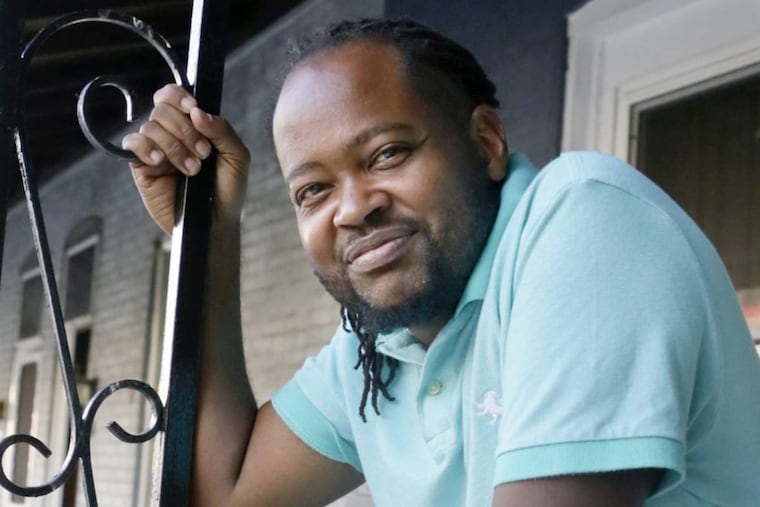New transplant rules help more African Americans get kidneys
A Thomas Jefferson University kidney specialist helped to bring about the changes. An increase in African American organ donors also helped - blacks on the waiting list get their fair share.

As an African American physician specializing in kidney diseases, Jerry McCauley is keenly aware of racial gaps that have plagued his field. Compared with white people, blacks are far more likely to develop kidney disease and wind up on dialysis, yet are less likely to be evaluated and listed for a lifesaving transplant.
McCauley is proud to report, however, that a longstanding disparity in actual kidney transplants has been eliminated. Thanks to improvements in allocation policies that he helped to bring about — and an increase in African American organ donors — blacks on the waiting list now get their fair share of kidneys from deceased donors. So do whites, Hispanics, Asians, and American Indians.
"It's been clear for many years that African Americans don't get transplanted as often as everyone else," said McCauley, director of the nephrology division at Thomas Jefferson University. "I'm happy to say that is no longer true."
The achievement is heartening, given that racial disparities in health care are a well-documented and persistent problem in Philadelphia and across the United States. In general, minorities face inequities in getting insurance, accessing care, and sustaining that care during chronic illness.
McCauley has long served on or chaired the minority affairs committee of the United Network for Organ Sharing, which sets national organ-allocation policy.
UNOS data he presented this month show that in 2016, a third of those on the waiting list (31,830 people) were African American, and just over a third of transplant recipients (4,284) were African American. The rates at which other racial groups were wait-listed and transplanted were also even.
There still aren't enough kidneys for those in need. But the system no longer unintentionally works against blacks as it did in the 1990s, when UNOS data show they made up more than a third of the wait inglist, but got only about a quarter of kidney transplants.
"UNOS realized they needed a new allocation system to address the equity issue," McCauley said.
So, what changed?
For one thing, campaigns aimed at getting more African Americans to become organ donors have succeeded. Since 1999, black donation rates have steadily risen, and now are slightly higher than white rates. (However, because whites are the biggest demographic group, they still donate the most kidneys.)
At the same time, transplant doctors have discovered that closely matching tissue protein markers of donors and recipients is not necessary. Since those markers cluster by race and most kidneys come from white donors, white recipients had an automatic advantage. UNOS gradually eased the tissue-matching rules, which meant kidneys could be allocated without regard to race.
More factors: New hepatitis C drugs have increased the availability of healthy organs, and living donations are becoming more frequent.
In 2010, the racial inequity in kidney transplant rates disappeared for the first time — but just for that year. The minority affairs committee did more analysis, consultation, and soul-searching. That led UNOS to make a number of refinements in 2014, including a controversial one: Patients listed for a transplant get credit for their time on dialysis, thus moving them up the priority list. This was intended to increase transplant access for minorities who, for many reasons, often don't get placed on the waiting list in a timely manner after going on dialysis, a blood-filtering process that requires patients to spend many hours a week in a clinic.
"It may have to do with socioeconomics," McCauley said. "Maybe they don't have the resources to get to a transplant center and get the evaluation. There might be missed appointments and those kinds of things. Maybe they didn't have somebody to watch their children. Some patients have said to me, 'A friend was transplanted and then he died, so I don't think I want to do it.'"
Jonathan Wade Leonard, 41, of South Philadelphia, is an example of the problem of delayed wait-listing — and the benefit of the new rule.
He was born with only one kidney, which was impaired, and went on dialysis at age 28. Two years ago, he began having seizures because dialysis was no longer sufficient to remove waste and salt from his blood. Still, he dragged his feet about going on the transplant list, worried that he couldn't afford months away from his heating and cooling business to recover from surgery.
"My doctors were always, 'You need a kidney. You need a kidney,' " he recalled. "They basically put more pressure on me. They said, 'With the new rules, you're going to be at the top of the waiting list. As soon as you get all your evaluations in, you're going to be called.' That's pretty much what happened."
In March, four months after he went on the waiting list, he got a transplant. By May, he was easing back into work, untethered from more than a decade of dialysis.
"I feel fine. And I have so much more freedom," he said. "Now, I can work weekends if I want to — not because I have to make up for time lost to dialysis."